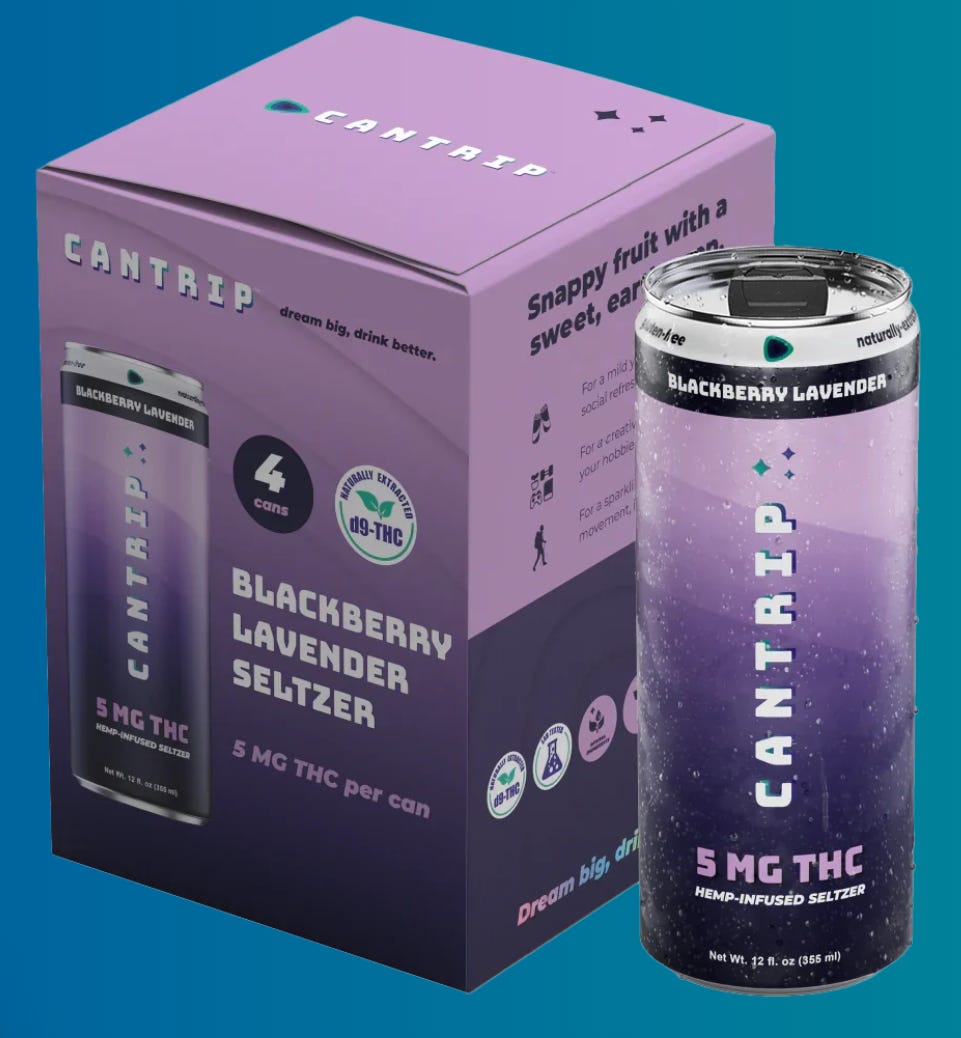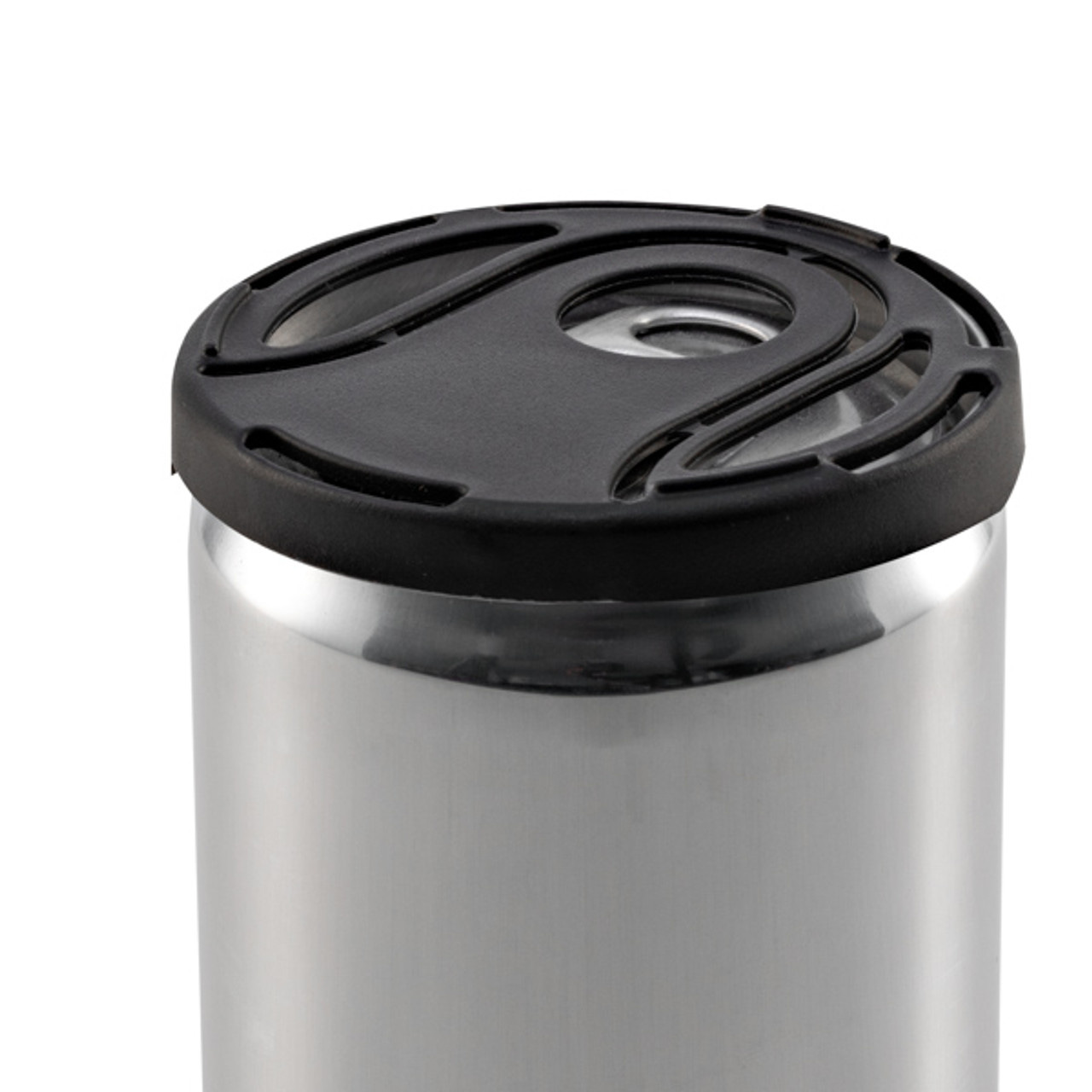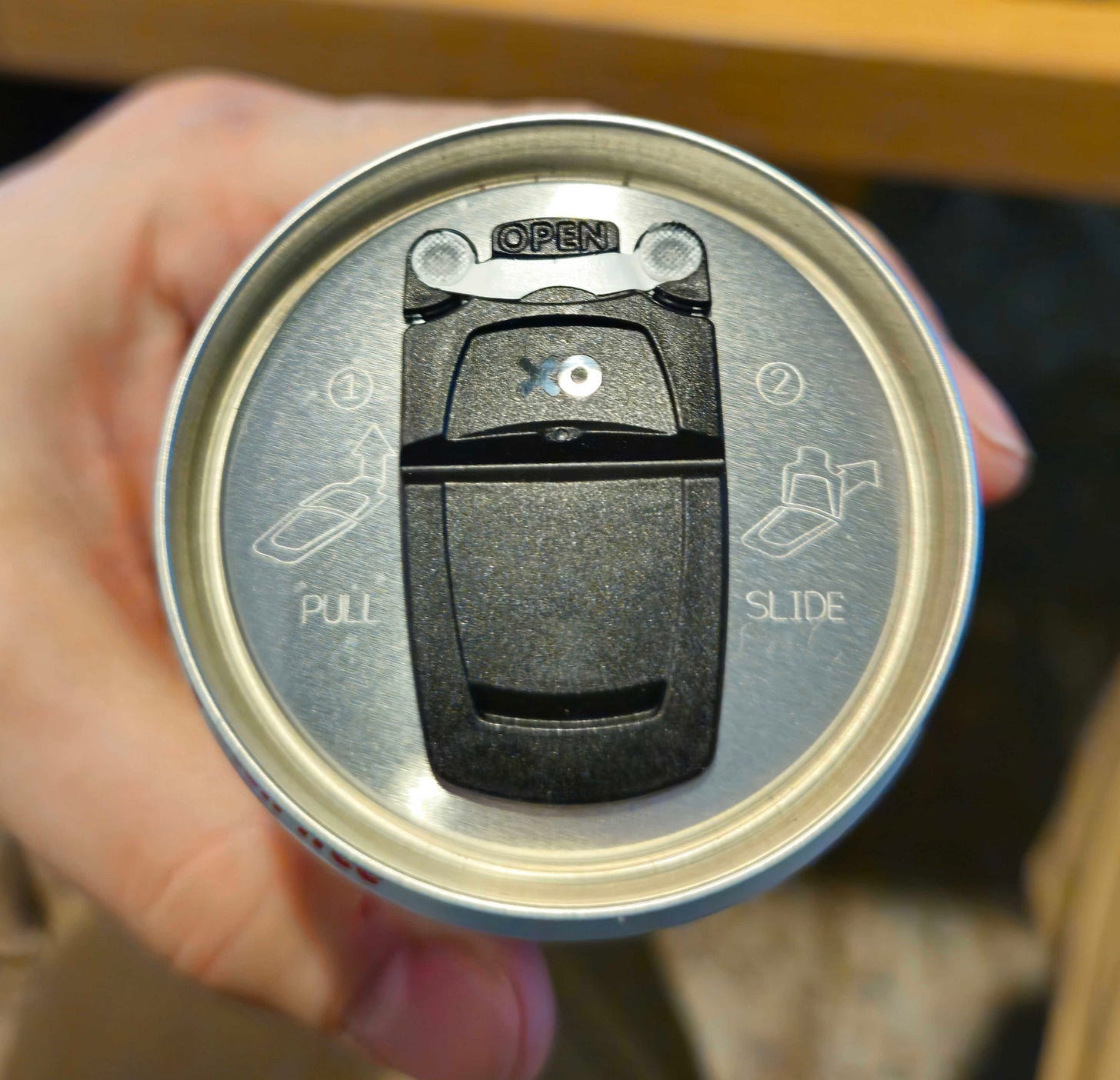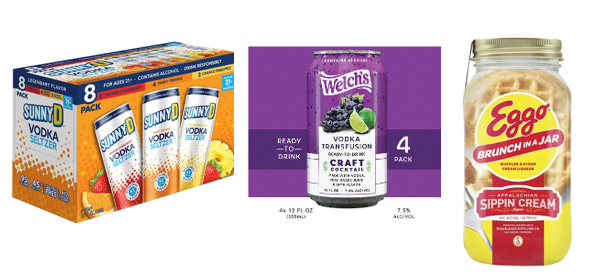Why THC Drinks Need a Signature Lid—And It Should Be Child-Resistant
In which I make a case that making THC drinks with CR lids is both responsible and smart business
Author’s Note: While I am involved in multiple trade organizations, the following views are held and expressed by me alone, and not by the trade organizations in which I participate.
So now I come around to a topic that I feel passionately about, but one that is very controversial inside my own coalition of like-minded hemp beverage companies: child-resistant (CR) lids and toppers on beverages.
I am lucky to be building this entirely new industry of adult beverages alongside some of the best and most decent human beings in the cannabis industry. The coalition of hemp beverage producers is one of the most forward thinking, practical, and public safety minded groups of the current age of cannabis - a group of folks dedicated to passing affirmative regulatory and taxation systems for our products so that we can ensure that those participating in our industry are held to a higher standard of conduct than the law currently requires (in most states.) There are still bad actors in the hemp beverage space, but the majority of successful THC drinks brands are self-regulated and actively spending money, effort, and attention communicating to lawmakers that we want to be regulated by state and federal governments in an appropriate manner.
This is important context, because I want to underscore the respect I have for my colleagues when I make the argument that there is one aspect of the business that most others have dead wrong, and one of the aspects of Cantrip products we find popular with consumers and regulators and unpopular with our competitors: child-resistant closures.
There are two main versions of this I’ve seen:
Can’t Tops - a somewhat impractical solution but effective, these fit snugly on top of a can when force is applied directly on top, and then need to be ripped open by slipping the finger underneath and pulling. There aren’t yet automated solutions. That’s I’ve seen.
XO Lids - originally sold as an option for Mountain Dew Code Red cans, these are resealable and child-resistant. I’ve seen them used for tall boy for High Noon vodka sodas as well. These lids have good versatility and are applied in the same way that normal can ends are, making it the efficient solution for child resistant products. The reclosable aspect is a nice feature as well that Cantrip consumers love, particularly on our higher dose products. There are some drawbacks - only one company from Germany makes them, so they are fairly expensive and frequently in short supply, and some challenges in running them at scale - but these are engineering problems, easily solved by scale and practical thought.
The benefits of these lids
There are a few benefits for the category when it comes to CR lids and toppers. The first and foremost is the thrust of this article is this: they are child resistant, making it much harder for young children to get into by accident. I speak as the parent of a toddler who is constantly getting into everything - and this kid loves seltzer, which he demands any time his mother opens a Polar seltzer.
It’s the responsible thing to do
If we are going to act as a responsible operators and lobby lawmakers on behalf of our category, we must ourselves be beyond reproach. The most frequent argument prohibitionists and lawmakers make when banning hemp derived THC products is for the public health protection of children. This happened in California when Gavin Newsom had his press conference banning all hemp THC products. This was the reasoning OCM gave when banning hemp THC products in New York. This was the reasoning NJ legislators gave when trying to ban these with S3235, and everywhere else. Right now, politicians don’t care if they’re child-resistant or not - their arguments are specious - but we don’t have to give them more ammunition.
If my toddler ever get hold of one of my drinks and ended up high because of it, I would struggle to ever forgive myself. Transparently I am worried about this CR lid or not, but I feel better knowing that it’s less likely having special lids.
It’s good branding for our category
Second - and I really believe this - having a separate lid for THC drinks would be the best way to set a very clear, unmissable signal that the product contained inside the can has THC. Despite best efforts in putting THC in big bold letters on the can as well as a 1/2” x 1/2” ASTM Symbol for THC on the side of the can, there’s still the chance that people miss this fact when purchasing the products. However, no one can miss a child resistant lid or topper on top of the can. If this became an industry standard, then people would never mix up a THC drink with a hard seltzer or soft drink again.
There is tremendous value for the industry in creating an expectation and association of THC drinks with different lids and ensuring that mistakes are not made. It not only shows that we are responsible, but creates a cool and unique package for THC drinks that does not exist in soft or hard drinks as they currently are. There builds a psychological association between the packaging and the consumer, and creates a sense of newness that would set us apart as forward thinking - a modern can for a modern consumer.
The nexus of responsibility and innovation is emblemized by these XO lids.
The arguments I hear most commonly against CR requirements
There are three arguments the hemp beverage industry usually makes when contesting child-resistant requirements for hemp THC beverages that I will break down:
Alcoholic beverages don’t require child-resistant lids, so why should we?
Regular pop-top can tabs are inherently child-resistant.
It’s too expensive
#1: Alcoholic beverages don’t require these lids, so why should we?
This is a disingenuous argument on its face, and always has been. I hear this over, and over, and over again.
Alcohol is not without reproach when it comes to marketing to kids. Popular kids brands are constantly launching alcoholic versions of their products: Sunny D, Welch’s, and Eggo all have alcoholic versions of their products, and none of them have child resistant closures. Why do I think there’s a difference? Specifically because humans have a biological reaction to alcohol that we do not have to cannabis extract.
If a kid takes a sip of a hard seltzer, beer, wine, or spirit, they will immediately taste the alcohol - even in a Sunny D vodka seltzer - and react negatively. Little kids will spit it out. This is not always the case with THC beverages, which are designed specifically around minimizing the taste of the cannabis and often don’t have any trace of cannabis taste at all. A five year old would not be able to get down a sip of vodka without spitting it out, but I surmise would be able to get down a seltzer or a soda with THC in it if their parents weren’t paying close attention. I find the argument that we can draw an equivalence between these two adult beverage types disingenuous at best.
We do not need to define ourselves or what is right for our category solely on what works for alcohol. By constantly staking THC drinks in comparison to alcoholic beverages, we forever invite misunderstandings and define ourselves by another product instead of defining who we are on our own. It’s never sat right with me. THC and Ethanol are two completely different substances, and while they can both cause a different state of mind from sober, that is where their similarities end. Onset time, effects of the intoxication, and resulting dangers of the intoxication are very different, and we need to be honest with ourselves about this so that we can be honest to our customers.
#2: Regular can lids are inherently child-resistant
I don’t personally believe this to be true but this one is a bit grey. I have heard a few brands tell me they were able to obtain CR certificates for regular pop-top can lids, but I haven’t seen anyone actually share that with me. In any case, it seems rather easy to game the certification process.
The process is set out in the Poison Prevention Packaging Act by 16 CFR 1700:
Testing process
A federally approved lab invites a panel of children ages 42–51 months
Each child is given a sample package and told how to open it within 5–10 minutes
At least 80% of children must not open the package within 10 minutes
A panel of adults ages 50–70 are tested
At least 90% of adults must be able to open the package within 5 minutes
The issue with this is that there is no requirement that the agencies that certify these products meet any specific standards and many of them are conducted overseas in places like China. The vagueness works to the benefit of companies that can simply cycle through trial groups to get the right result, or simply pay extra to get the result that they want. I don’t necessarily trust that a CR certificate that comes from China instead of the US is effective, and like I said, I’ve never seen such a certificate. When calling some of these firms, most told me they were certain a normal pop-top would not pass muster, hence my skepticism.
The other side of this argument stems from a specific ASTM standard, ASTM D3475-20. This is a paper entitled Standard Classification of Child-Resistant Packages. Now the argument here is especially specious. Specifically, the argument is that this standard deems “All Metal Cans” child resistant. But that is only true under a specific condition laid out in the standard - “requires tool.”
Some have further argued that a pop tab counts as a too. So I called ASTM and reached out for comment from the committee that wrote this paper. The definition of tool, from the PhD who wrote the paper, is:
A tool means a separate tool (like scissors, a coin, a screwdriver) is required to access the contents. It could mean a bottle opener. If the tool is sold with the product at retail, the child is given the tool for the 10 minute test period. If the tool is not sold with the product, the child is not given the tool.
So a pull tab is decidedly not a “separate tool,” and the argument that a can lid is inherently child resistant based on this paper is simply and factually incorrect.
Conclusion: There may be some good faith to the argument that “can pop tops are child-resistant.” I have yet to see a certificate confirming this but there are claims they are out there. But you have to ask yourself: would I trust that a 4, 5, or 6 year old wouldn’t be able to open one if they were unsupervised?
They are too expensive
As probably one of the largest purchasers of these lids in the world, I am both empathetic and not empathetic to this argument. XO lids are expensive, this is true. They can run up to 5 times the cost of a normal lid, and in beverage every cent does matter.
Despite the added expense, you can still remain profitable selling them if you have the right Price Pack Architecture. Recently, Rhode Island introduced a rule requiring resealable lids in order to sell 5mg beverages (because each serving technically must be 1 serving.) Within days of this rule going into effect, I had multiple people reaching out to try to buy some XO lids off me. If brands believe they can make it work for the smallest geographic state in the country and the 7th least populated, I have to believe they can make it work for the rest of the country.
Conclusions
Using child resistant lids is the right thing to do. It makes it easier for people to tell that it’s a THC product, adds reclosability in some cases, and most importantly better protects kids from accidental ingestion which should be a priority for this industry. It is expensive, and if everyone switched tomorrow we’d definitely have some supply chain issues.
Several states have already passed these requirements into law, including TN, KY, and GA. None of them, so far as I know, have enforced these requirements, instead ignoring them or leaning on the ASTM standard I referenced above to claim that they are meeting the requirements.
But my real conclusion? I expect this to fall on deaf ears, and meet with wide resistance from my industry. As I noted at the beginning, the hemp beverage industry is full of decent people and responsible operators - but this particular item has been a point of widespread friction across the industry. The official stance of the Hemp Beverage Alliance, an organization for which I am a board member, is that cans are inherently child-resistant and should not require additional measures.
That’s not to say I stand completely alone. I’ve seen both Crooked and TBD use Can’t Tops; Mary Jones and Crescent 9 have also used XO lids at various points, and even Drippy. But the vast majority are not with me on this, and maybe that’s okay. I don’t think the world will end if we don’t use these lids, and maybe everything will be fine. But I will continue to use them for Cantrip’s lids, and if we get to use them as a differentiator - that’s fine by me.
-Adam







